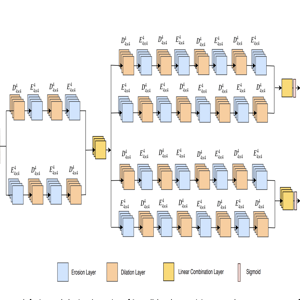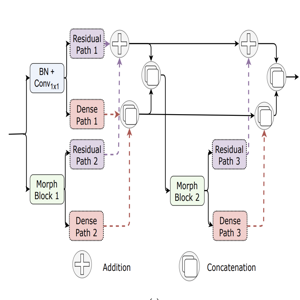Publications

Image Restoration by Learning Morphological Opening-Closing Network
In this work, we revisit the concept of structuring elements (SE) for morphological operations and attempt to incorporate it with learning-based methods. We propose the Opening-Closing network, consisting solely of basic morphological operations such as Opening and Closing, for de-raining and de-hazing real-life images. Unlike convolutions, morphological operations have inherent non-linearity that helps extract high level interpretable features This allows us to achieve results comparable to state of the art, despite having a fraction of parameters and a simple architecture.
View Publication
Dual Path Morph-UNet for Road and Building Segmentation from Satellite Images
In this work we propose Dual Path Morph-UNet for road and building segmentation, wherein learnable 2D morphological operations replace convolutions. The network performance is streamlined by incorporating parallel dense and residual paths for efficient information propagation, resulting in lower feature redundancy. Our network outperforms the state-of-the-art method significantly on object segmentation by utilizing multi-scale high-level morphological features with only 0.4 million parameters. Furthermore, the architecture's highly modular structure makes it suitable for other domains with minimal changes required.
View Publication